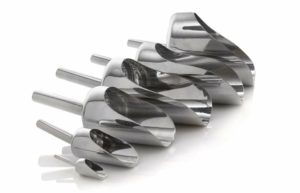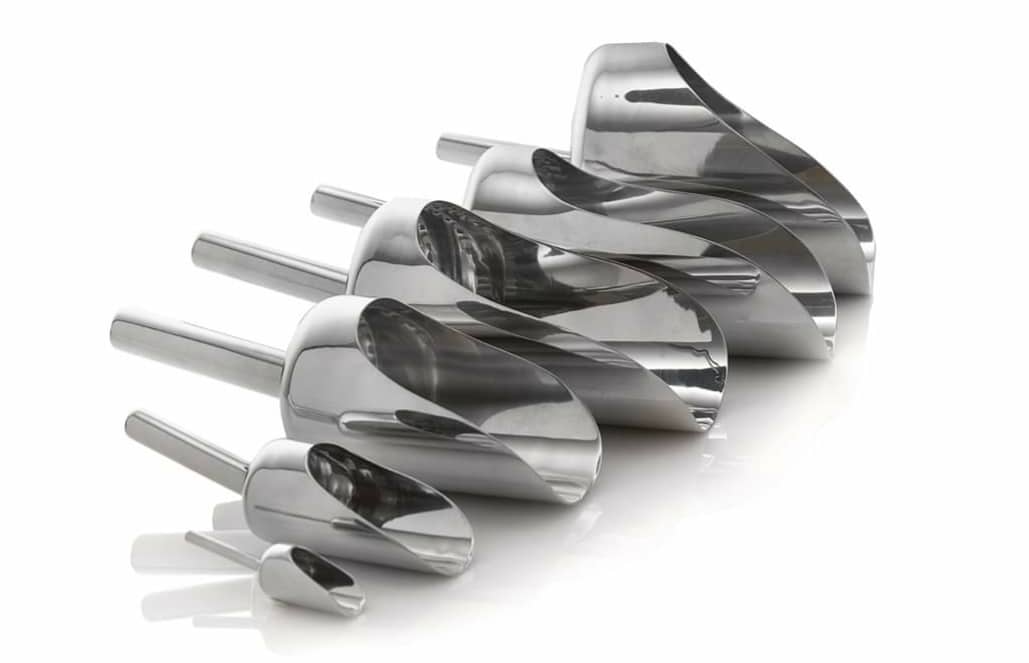These days, choosing the right material for constructing manufacturing equipment parts is an important aspect. Manufacturing equipment is usually made of stainless steel, with various alloys in SS such as 304, 316, and 316L. These alloys are widely used and valuable. Type 304 is a commonly used alloy in the group of steel known as Austenitic Stainless Steel.
Components of Stainless Steel Grade:

These allow are generally characterized as containing 18% chromium and 8% Nickel, being non-magnetic and non-hardenable.
Different Types of Stainless Steels and Composition:
| SS Ingredients | 304 (%) | 304L (%) | 316 (%) | 316L (%) |
|---|---|---|---|---|
| C | 0.08 | 0.03 | 0.08 | 0.03 |
| Mn | 2.0 | 2.0 | 2.0 | 2.0 |
| Si | 0.75 | 0.75 | 1.0 | 1.0 |
| P | 0.045 | 0.045 | 0.045 | 0.045 |
| S | 0.03 | 0.03 | 0.03 | 0.03 |
| Cr | 18-20 | 18-20 | 16-18 | 16-18 |
| Ni | 8.0-10.5 | 9.0-13.0 | 10.0-14.0 | 12.0-15.0 |
| Mo | – | – | 2.0-3.0 | 2.0-3.0 |
| N | – | – | 0.1 | 0.1 |
Difference between SS 304 and 316L:
Type 304 is resistant to attack by nitric acid but it may be attacked by sulfuric acid and hydrochloric acid.
Type 304 is a good general-purpose alloy for pharmaceutical applications where pitting corrosion is not a problem.
316 is similar to type 304 except that, type 316 SS has 2 to 4% higher nickel content, 2% less chromium, and 2 to 3% molybdenum.
The molybdenum gives resistance to pitting corrosion as compared to SS 304 and slightly improves general corrosion resistance. Type 316 is usually specified for product contact surface, especially heating is involved due to the Superior pitting corrosion resistance.
Both types 304 and 316 are susceptible to intergranular corrosion adjacent to the welded area. Austenitic stainless steel is heated From 425°C to 870°C and cooled slowly as adjacent to a weld. The carbon tends to form chromium carbides which precipitate at the grain boundaries, resulting in reduced resistance to intergranular corrosion.
How to Prevent Intergranular Corrosion?
To solve this issue, Alloy Stainless Steel 304 L and 316 L were developed by lowering the carbon content to below 0.03%, in contrast to 0.08% and 0.1% for types 304 and 316, respectively.
Using SS Grade:
The low-carbon alloy of either 304 or 316 should be used when the piping system requires welding and when annealing after welding is impracticable. Type 316 L piping is typically used for water for injection, clean steam, deionized water, compressed gas distribution to be used in the control environment area, and product transfer piping.
Pharmaceutical companies are using SS-grade pipelines only for DM water, and water for injection, but why it is not being applied for Portable water lines also? It may be used for potable water.
Advantages of Stainless Steel in Pharmaceutical
The polished surface and corrosion-resistant nature of stainless steel (SS) help prevent contamination, making it easy to clean and disinfect. The smooth polished surface doesn’t encourage the growth of bacteria. Stainless steel also benefits ventilation systems by preventing the growth of molds.
How Stainless steel Prevents Contamination and corrosion (Mechanism)
Stainless Steel doesn’t release contaminants because, the chromium content of the steel combines with oxygen within the atmosphere to make an invisible film of chrome-containing oxide, called the passive layer.
The chromium oxide layer protects stainless steel (SS) from potential damage caused by machining and chemicals. If the metal gets scratched, the passive film is disrupted, leading to the formation of more oxide and recovery of the exposed surface. This process helps in protecting it from oxidation corrosion. Although the protective layer is too thin to be visible, it is responsible for the glossy look of stainless steel.

Naresh Bhakar is the Founder and Author at Pharmaguddu.com, bringing his extensive expertise in the field of pharmaceuticals to readers worldwide. He has experience in Pharma manufacturing and has worked with top Pharmaceuticals. He has rich knowledge and provides valuable insights and data through his articles and content on Pharmaguddu.com. For further inquiries or collaborations, please don’t hesitate to reach out via email at [email protected].

